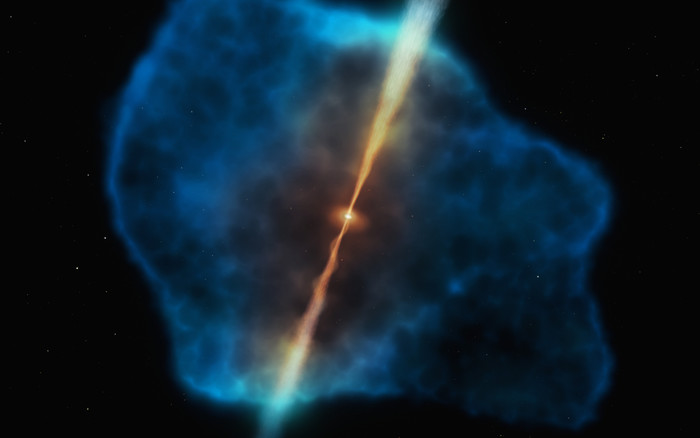Photographed the remains of the breakfast of the first black holes, born at the dawn of the cosmos, about 900 million years after the Big Bang: observed for the first time, they are halos of gas that extend up to one hundred thousand light years and that shine around some of the oldest galaxies in the universe. This is what emerges from the study published in the Astrophysical Journal by the group coordinated by the Italian Emanuele Paolo Farina, of the German Max Planck Institutes for Heidelberg Astronomy and for Garching Astrophysics. Among the authors of the research also Roberto Decarli and Lorenzo Busoni, of the National Institute of Astrophysics (INAF).
The study is based on the observations of 30 primordial quasars, distant galaxies with an active nucleus where a huge black hole dwells which makes them among the brightest sources in the universe. The quasars were analyzed with the new Muse (Multi Unit Spectroscopic Explorer) spectrograph of the telescope of the Southern European Observatory (Eso), Very Large Telescope (Vlt), located in Chile. The observations allowed to find large quantities of gas near the quasars and to explain the sudden growth of these sources with the rapid accumulation of matter for the meal of voracious primordial black holes.
"For decades astronomers have exploited the brightness of quasars to study the formation and evolution of galaxies and black holes in all cosmic times," Farina observed. "What we still don't understand is the process by which black holes with masses billions of times the Sun can form in less than a billion years after the Big Bang. To grow so much in such a short time - he concluded - these very young black holes must have had a rich buffet to eat, especially huge portions of hydrogen ". Their continuous supply, according to current theories, could take place through a dense network of filaments, the so-called cosmic spider web, capable of transporting gas from the intergalactic space to the quasars.
Seen the remains of the breakfast of the first black holes VIDEO
2019-12-23T14:53:09.653Z

Gas halos are almost 13 billion light years away (ANSA)
